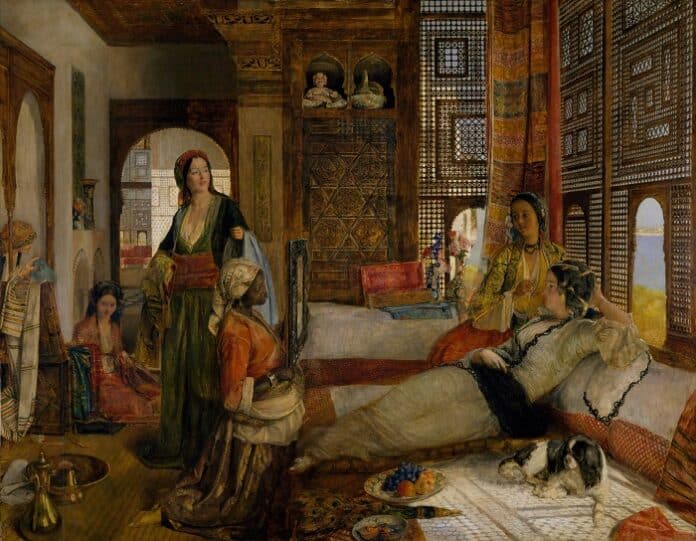Orientalism, a term coined in the late 19th century, describes a Western style of art, literature, and scholarship that represents the East, especially the Middle East and North Africa, through a lens that is often romanticized, exoticized, and coloured by the colonial attitudes of the time. This movement, though criticized for its stereotypical depiction and othering of Eastern cultures, has left a significant mark on the history of art and continues to be a subject of intense study and debate.
The roots of Orientalism art can be traced back to the early 19th century when European powers began to establish colonial dominions in the East. Artists, writers, and scholars from the West, fascinated by the exotic landscapes, peoples, and cultures of these regions, sought to capture and interpret them through their work. This fascination was fueled by the expansion of travel and the increasing accessibility of the East to Westerners, who were eager to discover and depict its perceived mysteries and allure.
One of the most prominent figures in the Orientalist art movement was Jean-Léon Gérôme, a French painter and sculptor whose works often depicted scenes of Eastern life with meticulous detail and vivid color. Gérôme’s paintings, such as “The Snake Charmer” and “The Turkish Bath,” exemplify the Orientalist fascination with exoticism and sensuality, portraying the East as a place of intrigue and decadence.
Another influential artist, Eugène Delacroix, was deeply inspired by his travels in North Africa. His famous work “Women of Algiers in their Apartment” reflects his observations of Algerian society and culture, capturing the private, everyday life of Algerian women with an eye for authenticity, yet filtered through a romantic lens. Delacroix’s work set a precedent for future Orientalist artists, who sought to bring the sights and sounds of the East to a Western audience.
Orientalism was not confined to visual arts; it also permeated literature and scholarship. Edward Said’s seminal work “Orientalism” (1978) critically examines how Western writers, including poets and novelists, constructed a distorted image of the East as the “Other”—mysterious, backward, and uncivilized. Said argues that these depictions served to justify colonial domination and reinforce Western identity by contrast.
Despite its contributions to art and literature, Orientalism has been critiqued for its inherent biases and misconceptions. Critics argue that Orientalist works often relied on second-hand information and imagination rather than firsthand experience, leading to the reinforcement of stereotypes and the misrepresentation of Eastern cultures. This has prompted a reevaluation of Orientalist art and literature, encouraging a more nuanced understanding of the complex interplay between observer and observed.
The impact of Orientalism extends beyond its historical period, influencing contemporary art, fashion, and media. Today, artists and scholars approach the themes of Orientalism with a critical eye, aiming to subvert and challenge the traditional narratives and perspectives. This has led to a rich dialogue about cultural appropriation, representation, and the power dynamics involved in the depiction of the East by the West.
In recent years, museums and galleries have begun to reassess their collections of Orientalist art, providing context that acknowledges the colonial backdrop and offering alternative narratives. This shift reflects a broader movement towards decolonizing art history and promoting a more inclusive and accurate representation of diverse cultures and histories.
Orientalism has also inspired debates about identity and belonging among diaspora communities from the regions depicted in Orientalist works. For some, these images are a painful reminder of colonial subjugation and cultural misrepresentation. For others, they offer a complex legacy that is intertwined with personal and collective histories, sparking conversations about heritage, memory, and the process of reclaiming and reinterpreting Orientalist imagery.
Moreover, the legacy of Orientalism highlights the importance of cross-cultural understanding and the ethical responsibilities of artists and scholars when engaging with cultures other than their own. It serves as a cautionary tale about the dangers of exoticization and othering, urging a more empathetic and informed approach to cultural representation.
In the academic world, Orientalism has spurred interdisciplinary studies that bridge art history, postcolonial theory, and cultural studies. Scholars are delving deeper into the power structures that underlie the production of knowledge and art, examining how these dynamics shape perceptions of the self and the Other. This has enriched the discourse on Orientalism, offering new insights and perspectives that challenge its historical narrative.
Despite its contentious nature, the Orientalist movement has undeniably contributed to the richness of Western art and literature. It has opened up avenues for exploring the unknown and has been a catalyst for discussions about the ethics of representation and the complexities of cultural exchange. As such, Orientalism occupies a unique place in the history of art, serving both as a mirror of its time and a subject of ongoing reflection and reinterpretation.
The visual splendor of Orientalist paintings, with their vibrant colors and intricate details, continues to captivate audiences, offering a window into the imagination of artists who sought to capture the essence of the East. These works, while criticized, also provide an opportunity to engage with the past, inviting viewers to consider the contexts in which they were created and the viewpoints they represent.
Orientalism also underscores the transformative power of travel and exposure to different cultures. For many Orientalist artists, their journeys to the East were transformative experiences that deeply influenced their work and worldview. This highlights the potential for travel to foster understanding and appreciation of diversity, even as it also cautions against the superficial or biased interpretation of the cultures encountered.
The debate over Orientalism and its legacy reflects broader questions about the role of art in society and the responsibilities of artists. It challenges the art world to consider how cultural representations are constructed and the impact they have on our understanding of the world. By engaging with these questions, artists, scholars, and audiences can contribute to a more inclusive and respectful cultural dialogue.
In conclusion, Orientalism is a complex and multifaceted phenomenon that spans art, literature, and scholarship. While it has been critiqued for its portrayal of the East through a colonial lens, it has also sparked important discussions about representation, cultural exchange, and the power dynamics of art. As we continue to navigate a globalized world, the lessons of Orientalism remain relevant, reminding us of the importance of approaching other cultures with humility, respect, and a deep sense of ethical responsibility.





